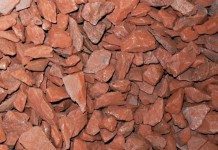
[miningmx.com] – KUMBA Iron Ore put to bed another regulatory concern announcing this morning it had been granted surface rights by the Department of Mineral Resources (DMR) over a portion of land crucial to the expansion of its flagship Sishen iron ore mine.
In its last financial year, the Constitutional Court judged the company’s Sishen Iron Ore Company (SIOC) the only entity able to apply for mining rights at the Sishen mine. The decision ended a four-year legal dispute with Imperial Crown Trading which claimed a right over 21.4% of SIOC’s land, and ArcelorMittal SA.
The surface rights granted today had belonged to Transnet, the state-owned transport utility, in terms of a rail route that passed through the Sishen mine.
The route has been relocated to allow for an expansion at Sishen – known as the Sishen Western Expansion Project (SWEP) – but the rights had remained with Transnet.
Following the transfer of the surface rights by the DMR, Kumba would proceed with the implementation of its mining plan from the second half of the 2014 financial year, it said in a statement today.
Access to the property was integral to development the SWEP which, if it had not been accessed, would have affected about 30% of the mine’s 262 million tonne (mt) mineral reserves.
Norman Mbazima, CEO of Kumba Iron Ore, hailed the surface rights transfer as a sign the group’s relationship with the DMR was improving – a comment no doubt aimed at accelerating Kumba’s last major remaining regulatory challenge which is to win 100% of the mining right for SIOC over the Sishen mine.
Commenting on its outlook for the current 2014 financial year, Mbazima said the firm would maintain last year’s exports of 39.1mt in an effort to rebuild stockpiles.
Stockpiles had been depleted partially owing to production problems at the firm’s flagship Sishen iron ore mine. Output for the 2013 financial year was 8% lower at just over 30mt.
Mbazima said Sishen’s production would climb back to 35mt in the current financial year in terms of a mine recovery and optimisation plan on which the company had been working for most of the 2013 financial year. By 2016, output from Sishen was planned to be 37mt, a return to its nameplate capacity.
Sishen’s operational troubles stem from the changing face of its geology with the orebody thinning and dipping to the west. This requires Kumba to mine more waste than in previous years as it develops the orebody for a return to previous production.
All in all, Kumba’s total production was only 2% lower despite Sishen’s problems. This was owing to the continued out-performance of the Kolomela mine which Kumba commissioned in 2012. The mine has a nameplate capacity of 9mt but produced 10.8mt in the 2013 financial year.
During the period, the iron ore price was 2% higher which, coupled with a weakening of the rand against the dollar, helped Kumba to a healthy increase in revenue. The outcome for was a 24% increase in headline earnings to R28.4bn and a total dividend of R40,04 per share equal to a 26% increase in shareholder rewards year-on-year.
Despite this relatively uppish performance, Mbazima said 2014 would be a year in which the company delivered on a strategy aimed at rebuilding output. There was also the possibility of lower prices in the second half of the year as production came on from Brazil and Australia.











